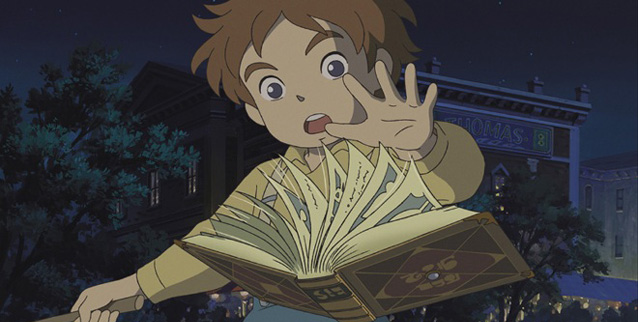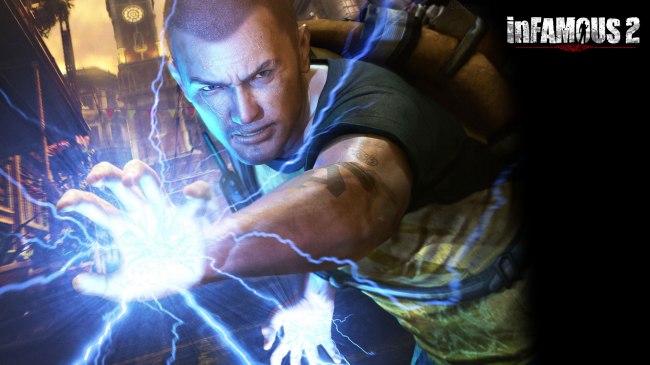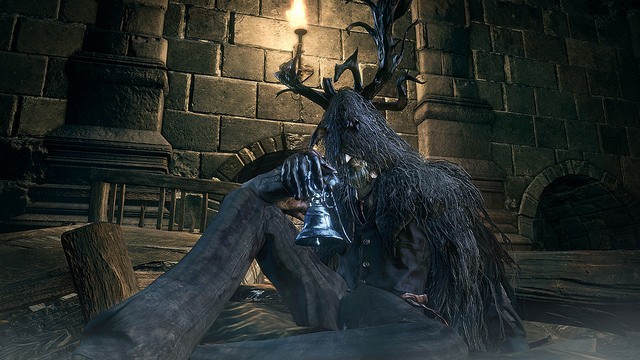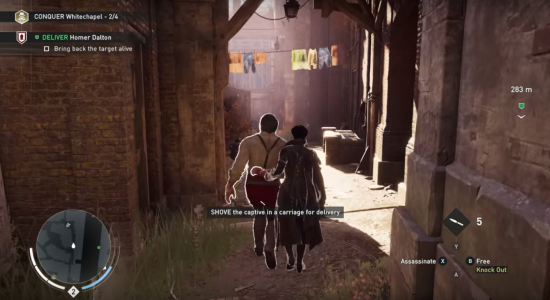


Unless you’ve been living under a rock the past few months, you’ve probably heard that the greatly-anticipated collaborative effort between Level-5 and Studio Ghibli, Ni no Kuni: Wrath of the White Witch, will be released in Europe and North America in 2012. The game looks truly breathtaking, with Studio Ghibli’s trademark visuals and music by Joe Hisaishi, the composer behind the studio’s classic animated films such as Spirited Away and Princess Mononoke. Considering the great success the Studio Ghibli films have seen internationally over the years, one would have thought a game featuring their animation would be an instant candidate for a localization, but for a period of time the possibility of an English release remained very much up in the air.
Gamer fans of Studio Ghibli had been following the Ni no Kuni series since it was first announced Famitsu back in 2008. Though the PS3 version was just released this November in Japan, there is, in fact, a companion game for the Nintendo DS, which has been out over a year now. With the DS version’s release coming and going without a peep as to whether or not we’d ever see it in English, it was only natural to fear the same fate might befall the PS3 version. Luckily, that is not the case, and the rest of the world will be able to play Ni no Kuni: Wrath of the White Witch in glorious HD on their PS3s sometime next year. But what of its portable predecessor?
Ni no Kuni: The Jet-Black Mage was released on the Nintendo DS on December 9th, 2010 in Japan. The game was packaged in quite a unique way – each copy came bundled with a 352 page hardcover book known as the Magic Master. Rather than simply being a guide to the game, or a background text included solely to deepen the player’s understanding of the world of Ni no Kuni, the Magic Master is an indispensable tool that is directly linked to the game, and players are required to consult it regularly in order to progress the story.
Of course, I was already sold on Ni no Kuni the moment the word “Ghibli” had been uttered, but the idea of a mystical tome that was necessary in order to play the game intrigued me to no end. Though the game’s price has skyrocketed on the internet due to its size and bulk, certain connections enabled me to acquire a used copy quite cheaply from Japan. Let me tell you, I had not been at all prepared for the package I was to receive.

When they say book, they mean book. The Magic Master is a beautiful, fully-illustrated masterpiece that contains everything from the spells needed to advance in the game to enemy information, item lists, and extensive backstory and lore surrounding the world of Ni no Kuni. It is a beautiful addition to the game and an instant conversation starter, even for those who may not know Japanese. I, for one, would have even bought the book by itself if it had been sold separately. I can only imagine how much it cost Level-5 to produce. The answer is probably quite a lot, as the PS3 version is notably lacking the book.
In a move that continues to boggle me, Level-5 decided to include this indispensable tome with the portable release of the game, and not the home console version. Let me tell you, I’ll be the first to admit that I think it’s downright awesome to be holding my copy of the Magic Master right alongside the game’s protagonist Oliver, but for a game that was marketed towards children on a console that they’d probably be playing on the train or bus more often then not, making a 350 page book something you need to carry around in addition to the game doesn’t seem like the best idea. For old fogies such as myself who would just as well be sitting on their couch at home playing their DS, the need for the book is by no means an inconvenience, and I would argue that it’s one of the most fun and innovative moves I’ve seen an RPG make in recent years.
When Oliver first receives the Magic Master in the game, his fairy friend Shizuku tells him to open it up and write his name in it. That was my cue to open up my copy of the book, where I was presented with a contract that I needed to sign (of course I didn’t actually write my name in it, are you nuts?). Writing your name is entirely optional, because of course the game won’t know whether you have or not, but from here on out almost all references to the Magic Master require you to have the book in front of you. Learning new spells forces you to find the necessary page and draw the rune illustrated on the DS’s touch screen– without the book at your side, you would literally be unable to advance in the game. Though this is exceedingly interesting to someone like me who was probably a librarian in another life, there are understandably many who find the idea of a game that requires you to look at a book tedious and unnecessary.

I’m sure it was the fact that Ni no Kuni: The Jet-Black Mage was sold with an actual book that made it such an unlikely candidate for a localization. Imagine how much it would cost to make and bundle the book with the game, along with the fact that most people would find it absurd to carry a book around with them along with their DS in the first place… It’s obvious that whoever decided to localize the game would lose a lot of money. The PS3 version, however, is the perfect candidate – not only does it not include the book, but the PS3 is the perfect medium by which to showcase Studio Ghibli’s beautiful visuals, not to mention the fact that the system is still going very strong internationally (unlike the DS, which is steadily headed toward its inevitable death).
For those of you who are actually intrigued by the idea of the book, never fear – the PS3 version will include an in-game digital version of the exact same book that was packaged with the DS Ni no Kuni. Though I’m beyond the moon that we’ll at least be seeing one version of Ni no Kuni outside of Japan, I can’t help but be a little disappointed that the lovely Magic Master will be relegated to an in-game only status. For collectors and true enthusiasts of Studio Ghibli and Japanese RPGs, I can’t recommend the book enough. Even if you can’t read Japanese it is still worth a purchase for its gorgeous illustrations. Besides, as soon as Ni no Kuni: Wrath of the White Witch debuts in English, you’ll have access to an English version, as well.
Though its understandable that the DS version of Ni no Kuni just wouldn’t do well enough to merit an English release, its still a shame that there will be a whole other side of the story that English-speaking gamers will never get to experience. Perhaps if Ni no Kuni: Wrath of the White Witch does well, we’ll see the DS version sometime in the future? I wouldn’t bet on it, but I do hope that anyone who finds the game’s premise to be mildly intriguing to make sure to purchase the game when it comes out.
In the meantime, I’ll be busy playing Ni no Kuni: The Jet-Black Mage, massive magical tome in hand.




 Warriors Orochi 3 Wiki – Everything you need to know about the game .
Warriors Orochi 3 Wiki – Everything you need to know about the game . Fallout 4
Fallout 4 How to Get The Boom Hammer in Bloodborne: The Old Hunters Guide
How to Get The Boom Hammer in Bloodborne: The Old Hunters Guide Wolfenstein: The Old Blood Chapter 1: Prison - walkthrough
Wolfenstein: The Old Blood Chapter 1: Prison - walkthrough AC Syndicate Sequence 3: Abberline, We Presume Guide
AC Syndicate Sequence 3: Abberline, We Presume Guide